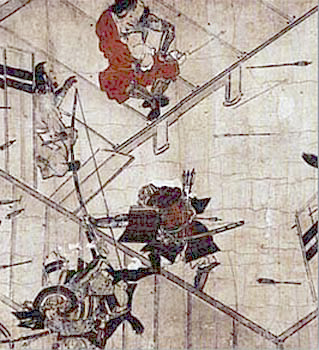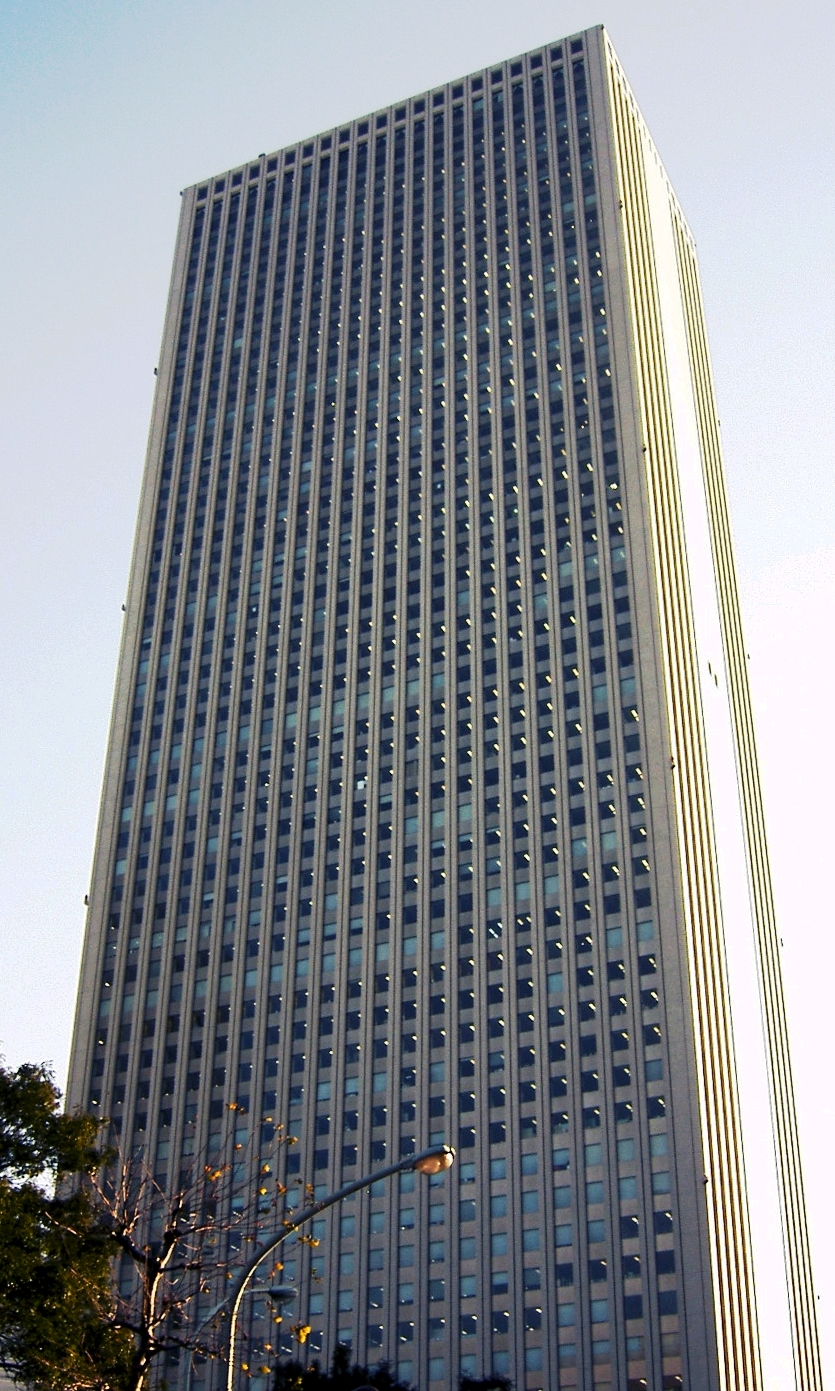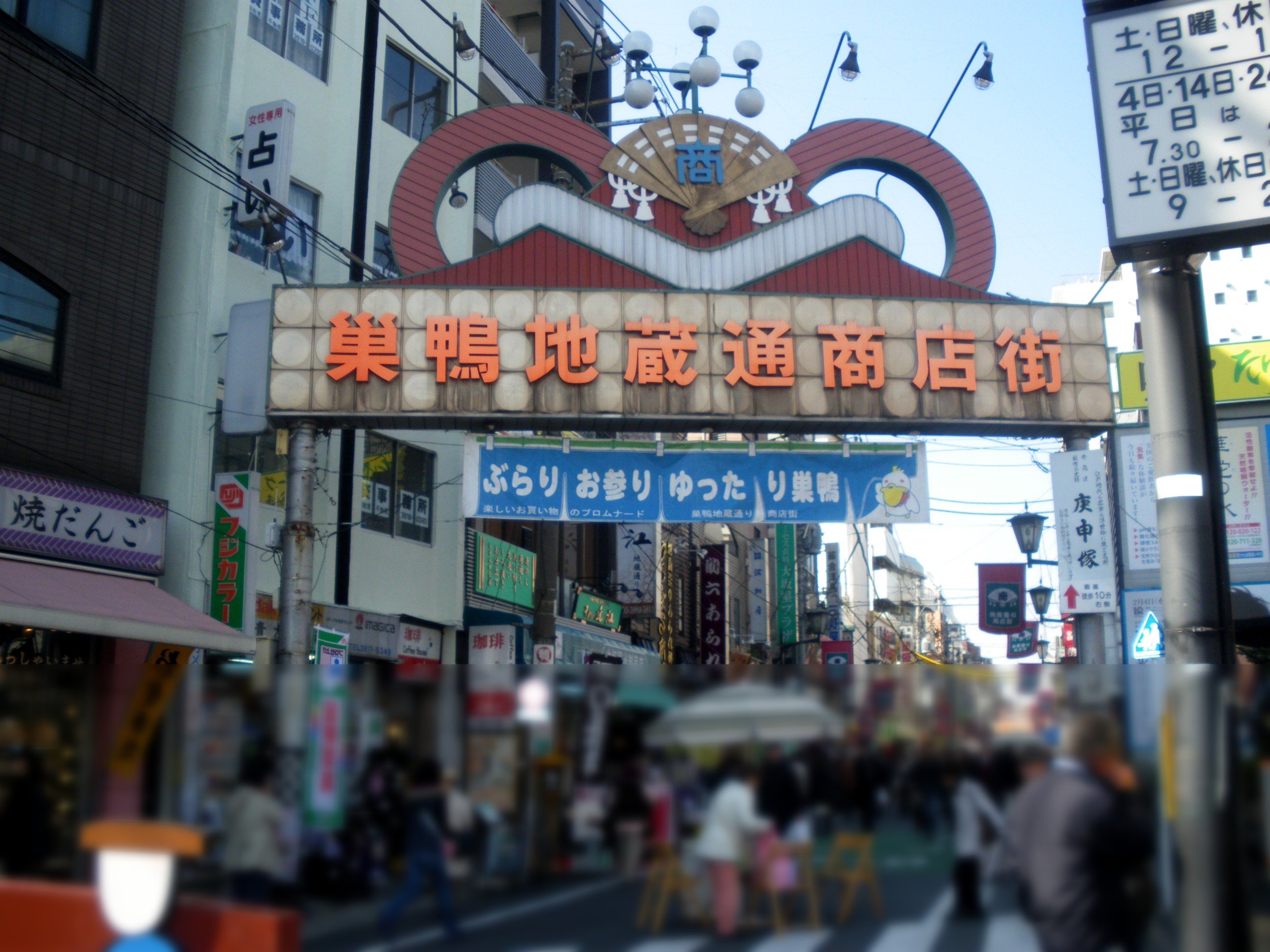|
Toshima Clan
The was a Japanese samurai clan prominent in the Kamakura and Muromachi periods of Japanese history in the northwest of what is today Tokyo. The clan was based primarily in Shakujii castle, in what is today Shakujii Park in the town of Shakujii, in Nerima-ku, until the fall of the castle in the late 1470s to Ogigayatsu Uesugi clan vassal Ōta Dōkan. History The clan made its chief seat of governance in the area around the Hiratsuka Shrine in what is today the Nakazato area of Tokyo's North Ward ('' Kita-ku''), and expanded their influence over the years to cover a much wider area, delegating much of it to branch families such as the Miyagi, Takinogawa, Shimura, and Itabashi clans. The Toshima obtained and moved into Shakujii towards the end of the Kamakura period (1185-1333). The clan's power and lineage solidified over the 13th-14th centuries. Though a number of clan heads had no direct male heir, for roughly one century from 1282 to 1395 the clan was supported by the Miyagi ... [...More Info...] [...Related Items...] OR: [Wikipedia] [Google] [Baidu] |
Japanese Language
is spoken natively by about 128 million people, primarily by Japanese people and primarily in Japan, the only country where it is the national language. Japanese belongs to the Japonic or Japanese- Ryukyuan language family. There have been many attempts to group the Japonic languages with other families such as the Ainu, Austroasiatic, Koreanic, and the now-discredited Altaic, but none of these proposals has gained widespread acceptance. Little is known of the language's prehistory, or when it first appeared in Japan. Chinese documents from the 3rd century AD recorded a few Japanese words, but substantial Old Japanese texts did not appear until the 8th century. From the Heian period (794–1185), there was a massive influx of Sino-Japanese vocabulary into the language, affecting the phonology of Early Middle Japanese. Late Middle Japanese (1185–1600) saw extensive grammatical changes and the first appearance of European loanwords. The basis of the standard dialect moved f ... [...More Info...] [...Related Items...] OR: [Wikipedia] [Google] [Baidu] |
Toshima Shigehiro
is a special ward in Tokyo, Japan. It is one of the eight central wards of the Tokyo Metropolitan area. Located in the northern area of Tokyo, Toshima is bordered by the wards of Nerima, Itabashi, and Kita in the north and Nakano, Shinjuku, and Bunkyo in the south. The ward was founded on March 15, 1947, and reached a peak resident population of 370,000 in 1965. The population has continued to decline and as of May 1, 2015, the ward had an estimated population of 298,250, with a population density of 22,920 persons per km2. During the day the population swells with commuters, resulting in a daytime population of around 378,475. The total land area of Toshima is 13.01 km2, sitting on a moderate plateau with a difference of 28 m between the ward's highest and lowest points. Approximately 47% of Toshima's land is residential, and 20% is commercial and public areas. Although Toshima is a ward, it is referred to as a city. The ward offices are located in Ikebukuro, which is als ... [...More Info...] [...Related Items...] OR: [Wikipedia] [Google] [Baidu] |
Ashikaga Mochiuji
Ashikaga Mochiuji (, 1398–1439) was the Kamakura-fu's fourth Kantō kubō during the Sengoku period (15th century) in Japan. During his long and troubled rule the relationship between the west and the east of the country reached an all-time low. Kamakura was finally attacked by ''shōgun'' Ashikaga Yoshinori and retaken by force. Mochiuji and his eldest son Yoshihisa killed themselves to escape capture. Biography Mochiuji became ''Kubō'' while still a child after his father died suddenly of a disease. His violent and abrasive character from the beginning caused widespread resentment among his vassals. After disagreements with Mochiuji, his ''kanrei'' Uesugi Zenshū organized a rebellion against him (the so-called ''Zenshū no Ran'') with the aid of nearly half the ''daimyōs'' in the northern and eastern provinces. Thanks to this support, Zenshū could take Kamakura and Mochiuji had to flee. However, despite his pursuing goals similar to those of the shogunate, Zenshū was afte ... [...More Info...] [...Related Items...] OR: [Wikipedia] [Google] [Baidu] |
Uesugi Norimoto
Uesugi (sometimes written ''Uyesugi'') is a Japanese surname. Notable people with the surname include: People *Uesugi clan, a Japanese samurai clan **Uesugi Akisada, (1454–1510), a samurai of the Uesugi clan **Uesugi Harunori (1751–1822), a Japanese daimyō **Uesugi Kagekatsu (1556–1623), a daimyō during the Sengoku and Edo periods of Japanese history **Uesugi Kagenobu (?–1578), a samurai and relative of Uesugi Kenshin in the Sengoku period of Japan **Uesugi Kagetora (1552–1579), the seventh son of Hōjō Ujiyasu and adopted son of Uesugi Kenshin **Uesugi Kenshin (1530–1578), a daimyō who ruled Echigo province in the Sengoku period of Japan ** Uesugi Mochinori (1844–1919), a Japanese samurai of the late Edo period **Uesugi Narinori, (1820–1889), a Japanese daimyō of the Edo period **Uesugi Norimasa (1523–1579), a daimyō of feudal Japan ** Uesugi Norizane, (1410–1466), a Japanese samurai of the Uesugi clan **Uesugi Tomooki, (1488–1537), a lord of Edo Castle a ... [...More Info...] [...Related Items...] OR: [Wikipedia] [Google] [Baidu] |
Toshima Noriyasu
is a special ward in Tokyo, Japan. It is one of the eight central wards of the Tokyo Metropolitan area. Located in the northern area of Tokyo, Toshima is bordered by the wards of Nerima, Itabashi, and Kita in the north and Nakano, Shinjuku, and Bunkyo in the south. The ward was founded on March 15, 1947, and reached a peak resident population of 370,000 in 1965. The population has continued to decline and as of May 1, 2015, the ward had an estimated population of 298,250, with a population density of 22,920 persons per km2. During the day the population swells with commuters, resulting in a daytime population of around 378,475. The total land area of Toshima is 13.01 km2, sitting on a moderate plateau with a difference of 28 m between the ward's highest and lowest points. Approximately 47% of Toshima's land is residential, and 20% is commercial and public areas. Although Toshima is a ward, it is referred to as a city. The ward offices are located in Ikebukuro, which is als ... [...More Info...] [...Related Items...] OR: [Wikipedia] [Google] [Baidu] |
Toshima Kagenori
is a special ward in Tokyo, Japan. It is one of the eight central wards of the Tokyo Metropolitan area. Located in the northern area of Tokyo, Toshima is bordered by the wards of Nerima, Itabashi, and Kita in the north and Nakano, Shinjuku, and Bunkyo in the south. The ward was founded on March 15, 1947, and reached a peak resident population of 370,000 in 1965. The population has continued to decline and as of May 1, 2015, the ward had an estimated population of 298,250, with a population density of 22,920 persons per km2. During the day the population swells with commuters, resulting in a daytime population of around 378,475. The total land area of Toshima is 13.01 km2, sitting on a moderate plateau with a difference of 28 m between the ward's highest and lowest points. Approximately 47% of Toshima's land is residential, and 20% is commercial and public areas. Although Toshima is a ward, it is referred to as a city. The ward offices are located in Ikebukuro, which is als ... [...More Info...] [...Related Items...] OR: [Wikipedia] [Google] [Baidu] |
Hōjō Tokiyuki
was a samurai of the Hōjō clan who fought both for and against the Imperial Court. His father was Hōjō Takatoki, last Shogunal Regent and ''de facto'' ruler of the Kamakura shogunate. Tokiyuki had fought against both the Imperial forces and those of the Ashikaga in order to save the Kamakura shogunate, of which his clan had been the ''de facto'' ruler for over a century. After the 1333 siege of Kamakura, his father's suicide and the almost complete destruction of his family, he escaped to Shinano Province and the home of Suwa Yorishige, where he gathered an army with which to return and try to regain power. He re-entered Kamakura in 1335, forcing Ashikaga Tadayoshi to flee before he was forced to flee himself by Tadayoshi's elder brother and future ''shōgun'' Ashikaga Takauji. Shortly after his defeat, Tokiyuki asked to be pardoned by Emperor Go-Daigo, and formally entered into the service of the Southern Court (then rival of Ashikaga shougunate), fighting under the com ... [...More Info...] [...Related Items...] OR: [Wikipedia] [Google] [Baidu] |
Toshima Terutoki
is a special ward in Tokyo, Japan. It is one of the eight central wards of the Tokyo Metropolitan area. Located in the northern area of Tokyo, Toshima is bordered by the wards of Nerima, Itabashi, and Kita in the north and Nakano, Shinjuku, and Bunkyo in the south. The ward was founded on March 15, 1947, and reached a peak resident population of 370,000 in 1965. The population has continued to decline and as of May 1, 2015, the ward had an estimated population of 298,250, with a population density of 22,920 persons per km2. During the day the population swells with commuters, resulting in a daytime population of around 378,475. The total land area of Toshima is 13.01 km2, sitting on a moderate plateau with a difference of 28 m between the ward's highest and lowest points. Approximately 47% of Toshima's land is residential, and 20% is commercial and public areas. Although Toshima is a ward, it is referred to as a city. The ward offices are located in Ikebukuro, which is als ... [...More Info...] [...Related Items...] OR: [Wikipedia] [Google] [Baidu] |
Toshima Kagemura
is a Special wards of Tokyo, special ward in Tokyo, Japan. It is one of the eight central wards of the Tokyo Metropolitan area. Located in the northern area of Tokyo, Toshima is bordered by the wards of Nerima, Itabashi, and Kita, Tokyo, Kita in the north and Nakano, Tokyo, Nakano, Shinjuku, and Bunkyo, Tokyo, Bunkyo in the south. The ward was founded on March 15, 1947, and reached a peak resident population of 370,000 in 1965. The population has continued to decline and as of May 1, 2015, the ward had an estimated population of 298,250, with a population density of 22,920 persons per km2. During the day the population swells with commuters, resulting in a daytime population of around 378,475. The total land area of Toshima is 13.01 km2, sitting on a moderate plateau with a difference of 28 m between the ward's highest and lowest points. Approximately 47% of Toshima's land is residential, and 20% is commercial and public areas. Although Toshima is a ward, it is referred to as a ... [...More Info...] [...Related Items...] OR: [Wikipedia] [Google] [Baidu] |



